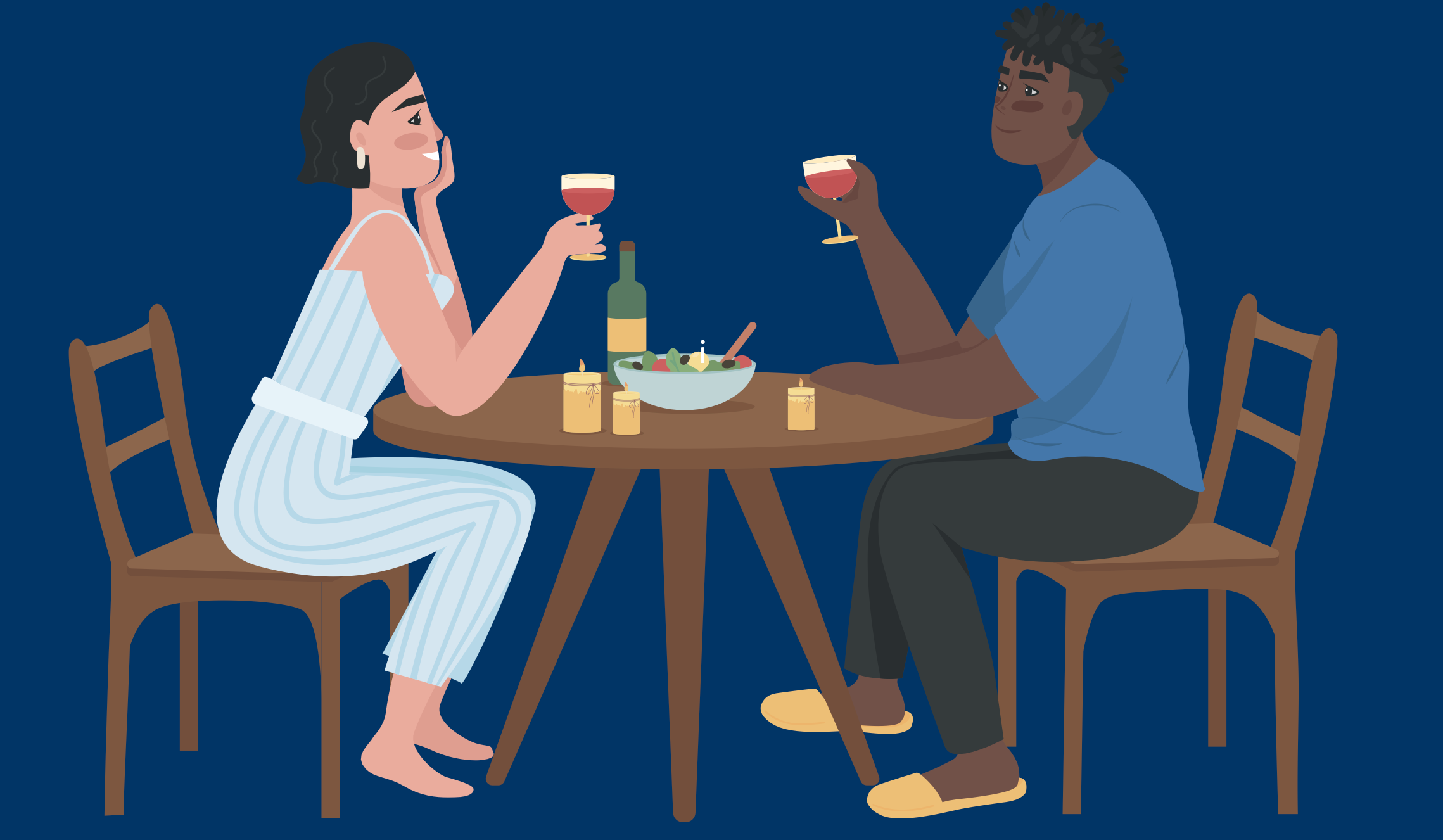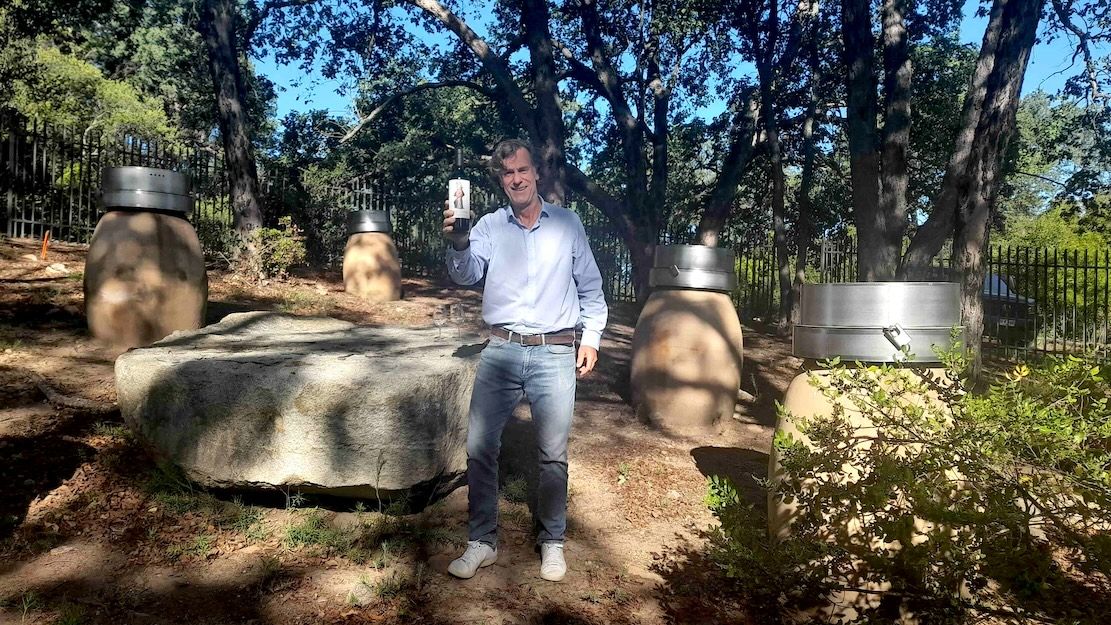Dedicated research into consumer wine trends in the on-trade is hard to come by. So make sure you bookmark this new study from KAM. You can download the report – What We Want From Wine – here.
First of all the good news. Over a third of people (36%) are drinking more wine now than they were a year ago. Two out of three Generation Z and millennial consumers are drinking more wine now than this time last year, according to the new KAM wine consumer research study.
This increase is being driven by the re-opening of the on-trade and the fact people are driving out more. Whilst the on-trade is not yet back to pre-pandemic levels, KAM says around half ofaverage wine drinkers are going out at least once a week. Of which 72% of Gen Z are going out at least once a week, and 67% for millennials. On average, they visit pubs, bars, and restaurants 2.5 and 2.2 times a week, respectively.

That said KAM also stresses around one in seven say they are drinking less wine now compared to 12 months ago. With the biggest determining factor being a general cutting down of alcohol consumption.
Now let’s get into the nitty gritty of what all this means if restaurants, bars and pubs can get their wine offer right.
All about confidence
We are sometimes asked if we could have one superpower what would it be. Well, anyone involved in selling wine in the hospitality sector should turn that question round. What superpower can we give our customers? The answer stands out loud and clear in KAM’s new study. Confidence. Simple as that. Not the finest wines known to mankind, or wines at the most affordable price. They come later. To even get your average customer to think about buying a glass, or bottle of wine, you must put yourself firmly in their shoes. What can you do that gives them the confidence to make an easy wine purchase?
Which means having staff capable of making their customers feel as comfortable as possible when ordering wine. Wine is as intimidating to drinkers as it ever has been and there are now plenty of easier, more accessible and let’s face it more fun drinking categories to attract their attention.

Up to 70% of those surveyed think pubs and bars don’t provide enough information to help them make informed decision when ordering wine (43% for restaurants).
KAM’s study shows 31% of wine drinkers don’t feel confident ordering a bottle of wine in a pub, bar or restaurant and 62% say how they are treated by staff is crucial in determining which wine they do choose.
It seems average wine drinkers – 65% – are far happier to order wine when in a restaurant than in a pub. Thanks to the 70% of people who think staff in a restaurant are far more knowledgeable than in a pub. It’s a clear problem for pub operators to address and as KAM says make sure they are tackling these “perceptions head on to ensure that they are seen as a destination for wine” in their own right.
KAM also found nearly half (47%) of wine drinkers are put off by all the rules and complexity there is around wine compared to other drinks, and over a third (35%) find the words used to describe wine as too confusing, or ambiguous and nearly a fifth are too embarrassed to ask for help or recommendations from staff.
The facts and figures show what is at stake. Up to 57% of wine drinkers would spend more on wine if they felt more confident about ordering wine. And 49% would visit more often if they
felt more confident about ordering wine.
It means venues have to take action themselves to ensure every touch point a customer experiences about wine is as easy and as comfortable to understand as possible. Remember every wine rule or fact a customer comes across will be like an open door of discovery for some, and another door slamming in the face for others.
Sense of theatre
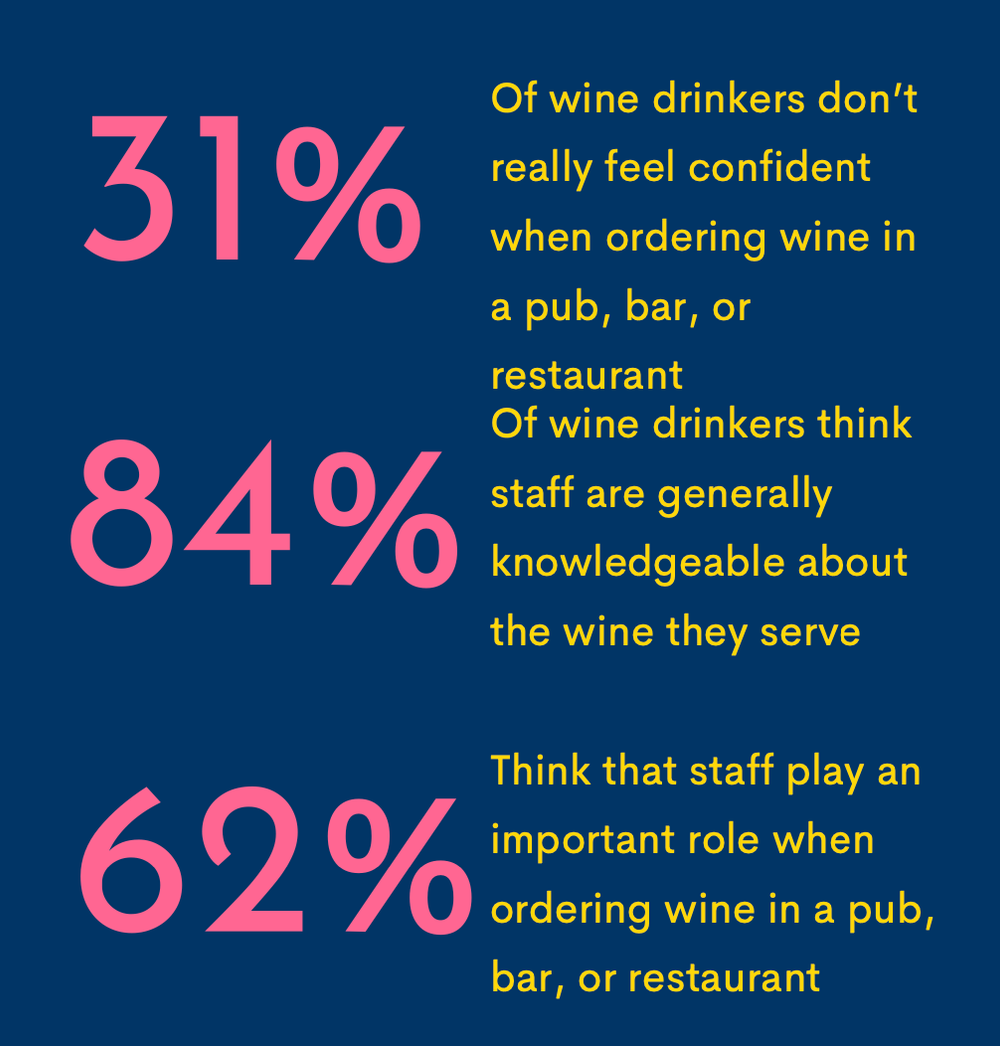
The growth in people drinking wine at home during the pandemic means on-trade venues will have to work a lot harder to give people a reason to go out. Otherwise people will feel they can get just as good an experience at home.
“If the experience isn’t there then it’s a much easier decision for them to ‘premiumise’ their wine experience at home instead of going out,” says KAM. “Experience is key for venues and with a category that customers find so enjoyable, it needs to be dialled up to ensure it’s an experience that they don’t forget.”
To back that KAM’s study finds that 70% of people say choosing wine is one of the most enjoyable experiences of going out to pubs, bars, and restaurants, just behind choosing food (84%), but ahead of choosing cocktails (61%), spirits (52%) and beer (41%).
What’s at stake
The KAM research makes it clear that on-trade venues and their suppliers need to work harder to make their outlets as welcoming and relaxed as they can be when it comes to ordering wine. Here are the key factors that consumers would like to see more.

If you can get it right then there are big rewards to take. As KAM explains: “By enabling wine drinkers to feel more confident about ordering wine, venues have the potential to drive an additional 2.4 visits per person, per month. That’s 29 extra visits per year. Let’s say the average bottle of wine costs £20 in a venue, this could mean, on average, over £500 per customer, per year, per venue. Not only would it encourage drinkers to visit more often, but it would also encourage them to spend more on wine when they do. So, this figure could be even greater.”
Red, grape or country?
When it comes to deciding what wine to buy the study has broken it down into 10 key areas. Which in descending order are:
1 Colour
2 Grape Variety
3 Country of origin
4 Preferred price range
5 Region
6 Actual price
7 A wine they’ve tried before
8 Description of the wine
9 Food pairing
10 Bottle size
If you drill into these figures a little more you find 42% of wine drinkers will order a style of wine they usually drink at home, and 30% will always order the same style of wine each time.
It means the on-trade is in danger of being dictated to by what what consumers are drinking at home rather than what their venues might have to offer. KAM’s study shows that given a choice up to a quarter of customers would like to try something new. If bars and restaurants want to attract more customers they need to have more ambitious lists.
Which means the scope for discovery is limited: 26% Like to try new wines they’ve not had before; 70% Think pubs/bars DON’T provide enough info to help make informed decision when ordering wine (43% for restaurants).
Grape Varieties
So which are the grape varieties that UK consumers are going to time after time? Here’s the Top 10 based on KAM’s consumer poll.
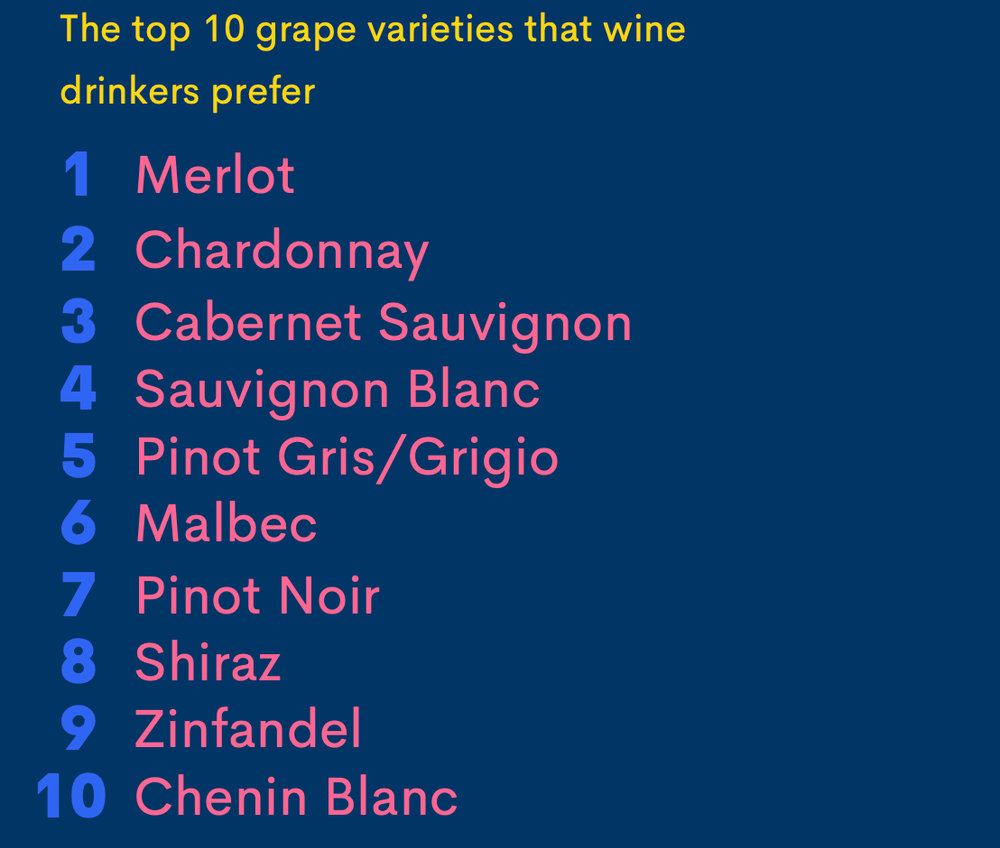
Of the Top 10, the top three, Merlot, Chardonnay and Cabernet Sauvignon, is where on-trade buyers need to be concentrating most of their resources, says KAM.
Interestingly the research also revealed how natural, organic and sustainable a wine is also now a clear determining factor: 53% want wines to be natural; 48% sustainable; 31% organic; 23% biodynamic; and 12% vegan; and 74% would like to see restaurants make it clear on their list what a wine is.
Social media influence
Social media is having a bigger and more important role in helping consumers choose the wines they want. KAM claims one in three wine drinkers say they have been influenced by social media to try specific wines, this rises to one in two millennials and two in three Gen Z drinkers.
The key factors that social media has an influence on includes:
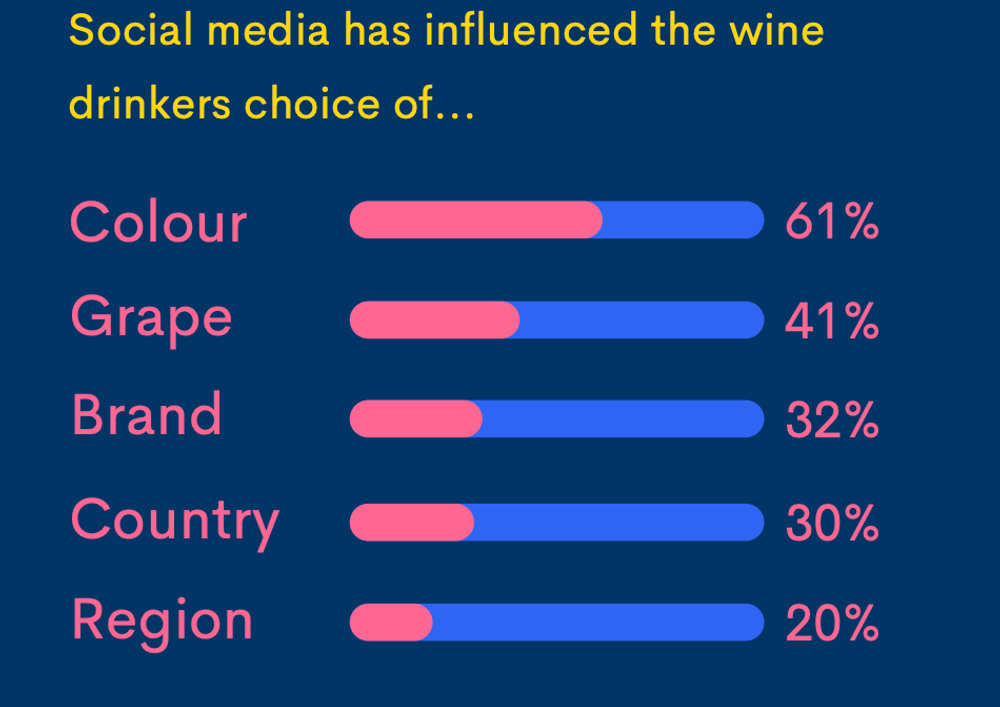
Buyer’s view
Harry Crowther, head wine buyer at Good Pair Days, the fast growing online wine site that uses machine learning algorithms to create bespoke wine ranges for its customers based on their taste profiles and likes and don’t likes, says this research shows just how important good wine training is in hospitality.
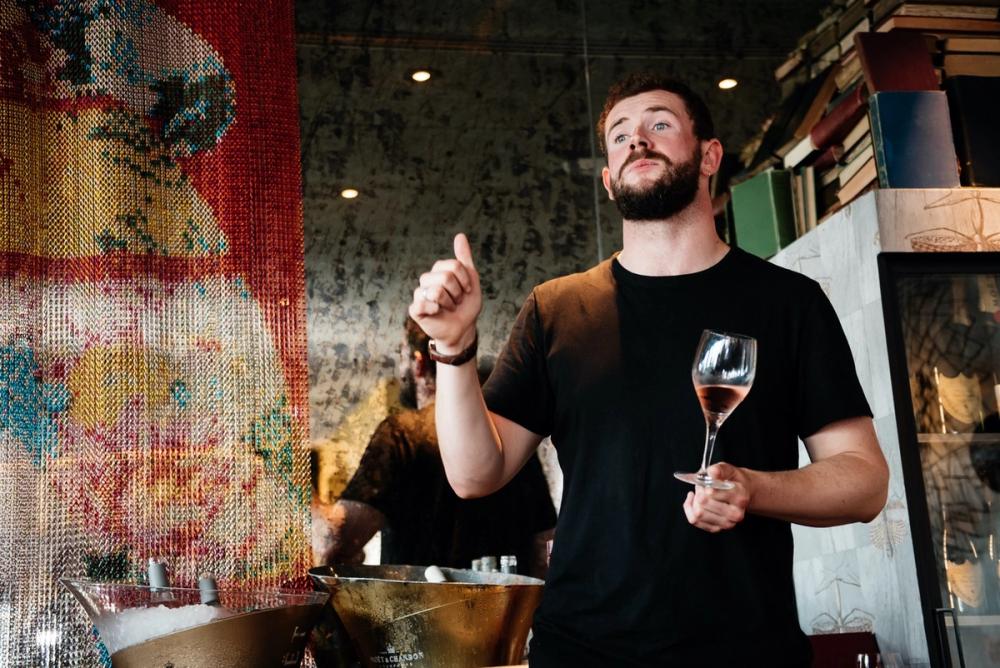
Harry Crowther has extensive experience training hospitality staff in wine through his consultancy business Grain to Grape
He explains: “It’s unrealistic to expect our teams to be consistently wine knowledgeable, and the findings of this paper clearly suggest that this isn’t actually that important. Train your team to taste wine and talk about it in a language that they can relate to. If they can relate to it, then so can your customers.”
That’s the key, says Crowther. “Focus on a service-based wine training approach. Training that inspires the team to relate certain wines to guests and offer them a range and a great experience.”
He says that means focusing more on training that is relevant to consumers and not passing wine exams. Hence hostility needs less formal knowledge. As Crowther explains: “Most customers don’t care what soil or type of oak a wine comes from, they can’t relate to that. But what they can do is relate to other elements. Organic goes some way, to connecting with the consumer, but the clear winner here is sustainability.
He adds: “People buy from people, so make sure that your team is equipped with the tools to offer range, choice and the upsell. Ensure they are trained up to take a customer from a £25 to a £30 bottle in a few words.”
Experiences matter

The final word goes to Blake Gladman, strategy and insights director at KAM, who helped compile the reports. He says: “One of the key weapons in our armoury is consumers are looking for experiences. There is a desire for an experience above products. We want to create memories. This research shows that wine can play a pivotal role in delivering that experience to the customer. However, we still have work to do to make it the best experience it can be.”
He adds: “We’ve seen that customers rate ordering and drinking wine as the most enjoyable experience when dining out (behind only food), however we also see that they are put off by confusing jargon and the perceived complexity around wine. They feel embarrassed and therefore default to what they know, switch to a different category, or worse, go without.
“Hospitality should be about a journey of discovery, or trying new things, meeting new people, and ultimately revelling in an experience that is unique to the industry – most importantly, an experience that they can’t get at home. When it comes to wine, we need to take extra care to ensure that we are guiding customers on this journey of discovery. For the world of wine is an extraordinary place and, if venues can get it right, it offers up the potential for extraordinary gains. Only by breaking down the barriers can we build for a better future.”
- You can download the full KAM wine report here.
- You can find out more about KAM and the other research it does here.
